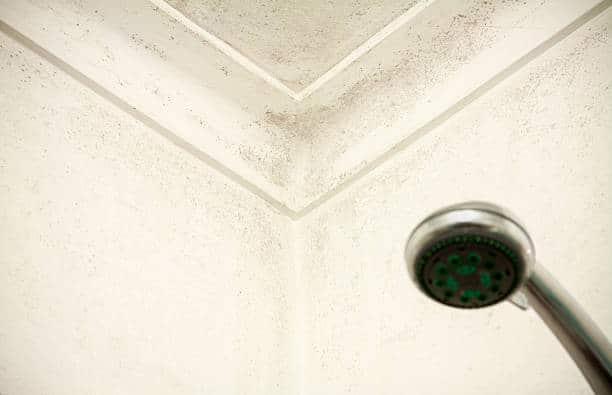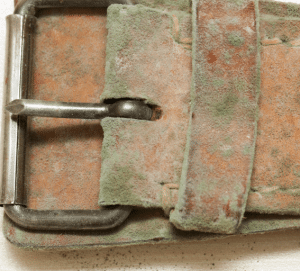Mold in the bathroom ceiling is a common and frustrating problem. Not only is it unsightly, but it can also pose health risks and damage your home. Fortunately, with some proactive steps, you can prevent mold from taking over your bathroom ceiling. In this blog, we will explore various strategies on how to prevent mold in bathroom ceilings, ensuring your bathroom remains clean, safe, and mold-free.
The Basics of Bathroom Ceiling Mold
Mold is a fungus that grows rapidly in environments with high moisture. Bathrooms, with their high humidity and frequent water usage, provide the perfect breeding ground for mold. Common types of mold found in bathrooms include black mold, mildew, and other fungal species. Recognizing the conditions that promote mold growth is the first step in learning how to prevent mold in bathroom ceilings.
Mold spores are virtually everywhere, and when they find a damp, warm environment, they start to grow and spread. Bathrooms, particularly ceilings, often meet these conditions because steam rises and condenses on cooler surfaces, such as the ceiling. This creates a moist environment perfect for mold growth.
Why Does My Bathroom Ceiling Keep Getting Mold?
Understanding why mold keeps appearing on your bathroom ceiling can help you tackle the root causes. Here are some common reasons:
Poor Ventilation
A lack of proper ventilation is one of the most common reasons for mold growth in bathroom ceilings. Bathrooms often lack windows, and the steam from showers has nowhere to escape. This steam condenses on the walls and ceilings, providing a perfect environment for mold.
Ensure your bathroom has adequate ventilation. Installing an exhaust fan can significantly reduce humidity levels. Always run the fan during and after a shower for at least 30 minutes to remove moisture from the air.
High Humidity Levels
Bathrooms are naturally humid environments. High humidity levels can persist long after the steam from a hot shower has dissipated, leading to mold growth on the ceiling. Use a dehumidifier to keep humidity levels below 50%. This can be especially useful in bathrooms without windows or proper ventilation. Additionally, keeping the bathroom door open after showers can help improve air circulation, which is vital in preventing mold in bathroom ceilings.
Leaks and Water Damage
Leaks from pipes or roofs can introduce moisture into the bathroom ceiling, providing a direct water source for mold. Even minor leaks can cause significant mold problems if left untreated. Regularly inspect your bathroom for leaks. Check under sinks, around the toilet, and near the shower for any signs of water damage. If you find a leak, repair it immediately to prevent mold growth.
Inadequate Cleaning Practices
Mold spores can settle on bathroom surfaces and start to grow if not cleaned regularly. Infrequent cleaning allows mold to establish itself and spread. Develop a regular cleaning routine. Use mold-inhibiting cleaners to wipe down surfaces, especially those prone to moisture, like ceilings, walls, and tiles.
How to Permanently Remove Mold from a Bathroom Ceiling
If mold has already taken hold, removing it effectively is crucial. Here’s a step-by-step guide on how to remove mold from your bathroom ceiling and keep it from coming back:
Preparation and Safety
Prioritizing safety is essential when handling mold. Mold spores can be harmful when inhaled, so it’s essential to protect yourself. Before starting the cleaning process, make sure the bathroom is well-ventilated. Open windows and doors, and use an exhaust fan if available. Wear protective gear, including gloves, goggles, and a mask, to prevent inhaling mold spores.
Cleaning Solutions
Several effective cleaning solutions can remove mold from your bathroom ceiling. While commercial mold removers are available, household items like vinegar and baking soda can be just as effective. For a natural approach, mix equal parts of water and vinegar in a spray bottle. Spray the solution onto the moldy area and let it sit for an hour. Scrub the area with a brush, rinse with water, and dry thoroughly. Vinegar not only kills mold but also helps prevent it from returning, which is important in keeping bathroom ceilings mold-free.
Cleaning Process
The cleaning process involves applying the cleaning solution, scrubbing the affected area, and ensuring it’s thoroughly dried to prevent mold from returning. Apply the chosen cleaning solution to the moldy area using a spray bottle. Use a brush to scrub the mold off the ceiling. Be thorough but gentle to avoid damaging the ceiling. After scrubbing, rinse the area with water and dry it completely with a clean cloth or towel.
Preventive Measures
After removing the mold, taking preventive measures is essential to ensure it doesn’t return. Apply a mold-resistant primer and paint to the ceiling. These products contain antimicrobial agents that inhibit mold growth. Also, consider installing a humidity sensor in your bathroom to monitor and manage humidity levels effectively. These preventive steps are key in keeping bathroom ceilings mold-free.
How to Prevent Mold from Coming Back on Your Ceiling
Prevention is better than cure. Here are some effective strategies to keep mold from returning:
Maintain Proper Ventilation
Ventilation is key to preventing mold. By reducing humidity and improving airflow, you can significantly lower the chances of mold growth. Install a high-quality exhaust fan in your bathroom to ensure proper ventilation. Turn it on during showers and leave it running for at least 30 minutes afterward to remove excess moisture. Additionally, leaving the bathroom door open after using the shower can help improve air circulation.
Regular Cleaning Routines
Regular cleaning is essential to prevent mold. Mold-inhibiting cleaners can help keep mold spores at bay. Develop a cleaning routine that includes wiping down bathroom surfaces with mold-inhibiting cleaners at least once a week. Pay special attention to areas prone to moisture, such as the ceiling, tiles, and grout lines.
Use Mold-Resistant Products
Using mold-resistant products can provide long-term protection against mold. When renovating or updating your bathroom, choose mold-resistant paint, tiles, and grout. These products contain antimicrobial agents that prevent mold growth, providing an extra layer of protection. This is a vital step in keeping your bathroom ceiling mold-free.
Address Leaks Promptly
Leaks can introduce moisture into your bathroom, creating an ideal environment for mold. Regularly inspect your bathroom for leaks. Check under sinks, around the toilet, and near the shower for any signs of water damage. If you find a leak, repair it immediately to prevent mold growth. Addressing leaks promptly is essential in preventing mold in bathroom ceilings.
Making Your Bathroom Mold-Proof
Designing a mold-resistant bathroom involves thoughtful planning and the right materials. Here’s how to make your bathroom mold-proof:
Ventilation Systems
Good ventilation is your primary defense against mold. It lowers humidity and enhances air circulation. Consider installing a high-quality exhaust fan in your bathroom.
Mold-Resistant Materials
Choosing mold-resistant materials for your bathroom can prevent mold from taking hold. Use mold-resistant drywall, often referred to as green board, in your bathroom. This type of drywall is designed to resist moisture, making it less likely to develop mold. Additionally, use mold-resistant paint and caulking in your bathroom.
Humidity Control
Controlling humidity levels is crucial to preventing mold. A dehumidifier can help keep humidity levels in check, reducing the chances of mold growth. Invest in a dehumidifier for your bathroom. Set it to maintain humidity levels below 50%. This can be especially useful in bathrooms without windows or proper ventilation. Humidity control is vital in preventing mold in bathroom ceilings.
Effective Mold Killers for Bathroom
Different mold removal products offer various benefits. Here’s a look at some of the most effective mold killers:
Commercial Products
Commercial mold removal products are specifically designed to kill mold and prevent its return. Concrobium Mold Control is a popular choice for mold removal. It works by crushing mold spores and leaving an antimicrobial barrier to prevent future growth. Another effective product is RMR-86 Mold Stain Remover, which removes mold stains and odors. These products are effective tools in keeping your bathroom ceiling mold-free.
Natural Remedies
Natural remedies are a great alternative for those who prefer environmentally friendly options. Vinegar, baking soda, and hydrogen peroxide are effective against mold. Use vinegar by spraying it directly onto moldy surfaces. Let it sit for an hour, then scrub and rinse. Baking soda can be mixed with water to create a paste. Apply the paste to moldy areas, scrub, and rinse. Hydrogen peroxide is another effective mold killer. Spray a 3% solution onto moldy areas, let it sit for 10 minutes, then scrub and rinse.
Pros and Cons
Commercial products are often more potent and can kill mold quickly. However, they may contain harsh chemicals that can be harmful to the environment and your health. Natural remedies are safer and more environmentally friendly, but they may require more effort and time to be effective.
Best Anti-Mold Products for Bathrooms
Choosing the right anti-mold products can make a big difference. Here are some top recommendations:
Mold-Resistant Paint
Mold-resistant paint contains antimicrobial agents that inhibit mold growth. It’s an excellent choice for preventing mold in bathrooms. Zinsser Perma-White is a top-rated mold-resistant paint. It provides a durable, washable surface that resists mold and mildew growth. Apply this paint to your bathroom ceiling and walls for long-lasting protection.
Mold-Inhibiting Cleaners
Regular use of mold-inhibiting cleaners can prevent mold from taking hold in your bathroom. Tilex Mold and Mildew Remover is a highly effective cleaner that kills mold on contact. Use it regularly to clean bathroom surfaces and prevent mold growth.
Sealants
Sealants can prevent moisture from seeping into tiles and grout, reducing the chances of mold growth. GE Silicone II is a high-quality sealant that provides a waterproof barrier. Use it to seal tiles, grout, and other bathroom surfaces to prevent moisture penetration. Proper sealing is an essential step in keeping bathroom ceilings mold-free.

Ensuring 100% Mold Elimination
Completely eliminating mold requires a comprehensive approach:
Thorough Cleaning
Thorough cleaning is essential to ensure that mold is completely eliminated. Pay special attention to hidden corners and hard-to-reach areas, as mold can thrive in these spots. Use mold-inhibiting cleaners to clean all bathroom surfaces, including the ceiling, walls, tiles, and grout. Completely dry all surfaces to avoid moisture accumulation. Thorough cleaning is a key practice in keeping bathroom ceilings mold-free.
Professional Services
In some cases, professional mold remediation may be necessary to ensure complete mold elimination. If mold persists despite your best efforts, consider hiring a professional mold remediation service. Mold Testing Houston offers comprehensive mold testing and inspection services in Houston, TX. Their experts can identify the source of the mold and provide effective solutions to eliminate it.
Regular Inspections
Regular inspections can help catch mold issues early before they become severe. Schedule regular inspections of your bathroom to identify any signs of mold early. Look for discoloration, musty odors, and water damage. Early detection can prevent mold from spreading and causing more significant problems. Regular inspections are crucial in keeping bathroom ceilings mold-free.
Natural Remedies for Mold in Bathroom
If you prefer natural solutions, here are some effective remedies:
Vinegar
Vinegar is a natural, non-toxic solution that kills mold and prevents its return. Spray undiluted vinegar directly onto moldy areas. Let it sit for an hour to kill the mold. Scrub the area with a brush, rinse with water, and dry thoroughly. Vinegar’s acidic properties make it effective in killing mold and preventing future growth.
Baking Soda
Baking soda is another natural remedy that can effectively remove mold. Make a thick paste by mixing baking soda with water. Apply this paste to the moldy spots on your bathroom ceiling. Let it rest for several minutes, then scrub the area with a brush. Rinse off with water and ensure the area is thoroughly dried. Baking soda not only kills mold but also absorbs moisture, preventing future growth.
Hydrogen Peroxide
Hydrogen peroxide is a natural disinfectant that can kill mold effectively. Spray a 3% hydrogen peroxide solution onto moldy areas. Let it sit for 10 minutes to kill the mold. Scrub the area with a brush, rinse with water, and dry thoroughly. Hydrogen peroxide is safe and effective for use on various surfaces.
Best Materials to Prevent Mold in Showers
Using the right materials can help prevent mold in your shower:
Mold-Resistant Drywall
Mold-resistant drywall, often referred to as green board, is designed to resist moisture and prevent mold growth. When renovating your bathroom, use mold-resistant drywall for the walls and ceiling. This material is treated with anti-microbial agents that inhibit mold growth, making it an excellent choice for bathrooms.
Fiberglass Showers
Fiberglass showers are less porous than tile, making them more resistant to mold and easier to clean. Consider installing a fiberglass shower unit. Fiberglass is less likely to develop mold because it doesn’t have the tiny pores that can trap moisture. Additionally, it’s easier to clean and maintain, reducing the chances of mold growth.
Sealed Tiles and Grout
Properly sealed tiles and grout can prevent moisture from penetrating and creating an environment for mold growth. Use high-quality sealants on your tiles and grout. GE Silicone II is a recommended sealant that provides a waterproof barrier. Regularly reapply the sealant as needed to maintain its effectiveness and prevent mold growth.
Frequently Asked Questions
Why does my bathroom ceiling keep getting mold?
Mold often recurs due to poor ventilation, high humidity, leaks, and inadequate cleaning.
How to permanently remove mold from a bathroom ceiling?
Use protective gear, apply a cleaning solution, scrub thoroughly, and take preventive measures.
How can I prevent mold from returning to my ceiling?
Ensure proper ventilation, clean regularly, use mold-resistant products and fix leaks promptly.
How do I make my bathroom mold-proof?
Install exhaust fans, use mold-resistant materials and control humidity levels.
What kills bathroom mold the best?
Commercial products like Concrobium Mold Control and natural remedies like vinegar are highly effective.
Conclusion
Preventing mold in your bathroom ceiling is crucial for maintaining a healthy and pleasant home environment. By following the steps outlined above, you can significantly reduce the risk of mold growth. Regular maintenance, proper ventilation, and the use of mold-resistant materials are key to keeping your bathroom mold-free.
For comprehensive mold testing and inspection services in Houston, TX, get in touch with Mold Testing Houston. We offer a full range of services to ensure your home remains safe and mold-free.
End Note
Maintaining a mold-free bathroom ceiling requires consistent effort and attention to detail. Regular inspections and immediate action against any signs of mold are essential. For the best results, consider professional services like Mold Testing Houston, which offers a full range of mold testing and inspection services in Houston, TX.





